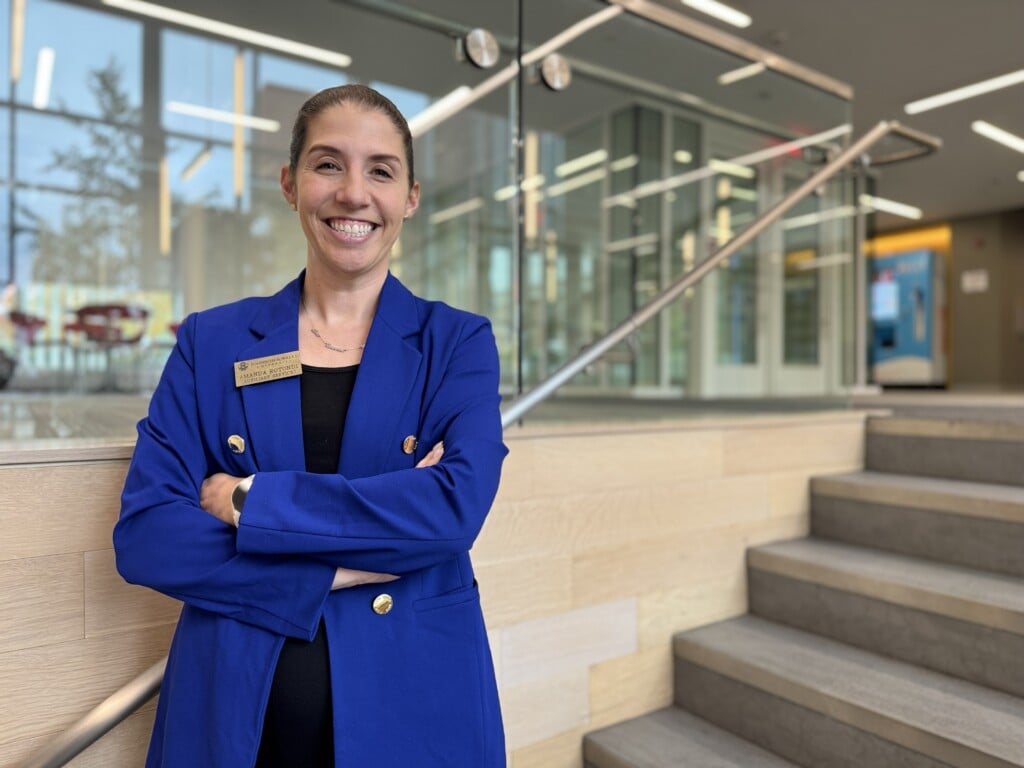The Way Things Used to Be: Tales From Our Elders
Eight resilient Rhode Islanders, between the ages of eighty-three and 108, reflect on what brought them to little Rhody, their own pasts and the way things were.
Mildred Nichols, ninety-one, East Side of Providence
As told to Jamie Coelho
I was born in 1929, months before the Great Depression, in a little town called Hamilton and grew up in Purcellville in Loudoun County in northern Virginia. I grew up in a segregated society. I think of it as an apartheid-like separation, totally unequal in services provided to black citizens. After winning lawsuits in the 1930s, these same people gave the school board acres of land to build a decent high school, which opened in 1941. I was bussed to this segregated school. When school integration was ordered in the 1954 landmark Supreme Court decision, Virginia mounted a massive resistance to the decision. It wasn’t until 1968 that Virginia integrated its schools, but there were clear signs beginning during World War II that Loudoun was becoming a high-tech suburb of Washington. Nevertheless, I don’t consider the Civil Rights movement as ever ending.
I come from a family of community advocates. My maternal great-grandfather and grandfather were among the founding members of the Loudoun County Emancipation Association founded in 1882. Over here on this wall is a photograph of my paternal great-great grandfather’s freedom papers [his certified ID to prove that he was not enslaved] and the tin box he made to carry them in, in case he was stopped by the patrollers. That was “stop and frisk” on steroids. He was born free and he was twenty-one at the time. His papers are on display at the Smithsonian’s National Museum of African American History and Culture.
My grandmother Clark was one of the first women in Loudoun County to register to vote. She registered on October 4, 1920. For the ninety-fifth celebration of women’s right to vote, I wore the roll [the list of people who had registered to vote] that had her name on it to the League of Women Voters celebration in Newport. Her name is Eppie Clark and you can see a “C” for “colored” after her name. I pinned this list onto the front of my white outfit so everyone could see it.
My late husband, Charles Nichols, was born in Brooklyn, New York. We met at Hampton Institute, which is now Hampton University in Virginia. Two months after I graduated, we got married. I was twenty-one. We have three sons, David, Keith and Brian. In 1954–55, my husband was a Fulbright professor at Aarhus University in Aarhus, Denmark. We had sailed for Europe with an almost three year old and a five-month-old infant. After that adventure-filled year, we were back at Hampton. Four years later, my husband accepted an offer to become a tenured professor of North American language and literature and director of the department of literature at the John F. Kennedy Institute for American Studies at the Free University. We flew to a divided Berlin, Germany, in 1959 with our two children. I was active in the German-American Women’s Club and I began working in the 1960s at a business college in Berlin, teaching English to businessmen. I took time out to have a third son in 1965.
We came to Providence in 1969 after Brown University offered my husband a tenured position in the English department. He also was the founding director of the program in Afro-American studies, now the department of Africana studies [he was one of the first tenured black professors to teach at the university]. Two decades earlier, my husband had gotten his Ph.D. from Brown. Our oldest son left for Yale. The middle child entered Moses Brown School, where he was a great track star, he played football and was on the lacrosse team. Then he went to Amherst. Brian ended up at the Brown Playschool, then attended Moses Brown and then Tufts University.
My first job in Rhode Island was at the federally funded Career Education Project, which determined if career counseling by telephone was an effective way to reach people, especially women who became known as displaced homemakers. When that study ended, I became the director of a new program, which was called the Career Counseling Service, until 1978. Then I joined the Rhode Island Occupational Information Committee, which developed occupational and career information to get a better understanding of the labor market and the education and training required to succeed. I did that for twenty-two years and I retired in 2000.
I was one of the founding members of the Rhode Island Women’s Political Caucus and a McGovern delegate to the ’72 Democratic National Convention. I was elected to the Rhode Island Democratic National Committee of Women, and later served on the Board of Governors for Higher Education, I also was appointed to the Economic Development Cooperation and was a board member at many nonprofit organizations.
My oldest son, David, is a physician and chief executive officer and president of the American Board of Pediatrics and he will soon get the Jacobi Medallion. My middle son, Keith, is a senior vice president at Comerica Bank in California. My youngest son, Brian, is currently the United States ambassador to Zimbabwe. Before that, he was the ambassador in Peru. I have five fabulous grandchildren, and three great-grandchildren.
I’ve lived in this home on the East Side of Providence for the last fifty years. I love reading non-fiction books. A few books on my table now are Destined to Witness and What Is the What. I also like reading the New York Times and Providence Journal. I am really interested in nutrition and I read a lot of books about it. I eat a lot of salmon, leafy greens, avocado and broccoli every day, and very little meat. I go to the theater, and I am a subscriber at Trinity. I go to church every Sunday at Providence Presbyterian. I go to the gym five days a week at the Miriam Cardiac Rehab gym, and I have been doing that since 2010. I use the treadmill, the elliptical and the recumbent elliptical for forty minutes or so. I really should do an hour at a time, but I tell myself I get enough activity at home.





























